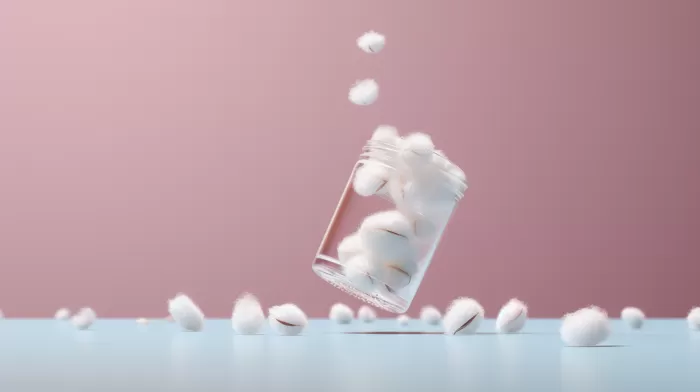When you’re reaching for an over-the-counter medication, the last thing you want is anything standing between you and relief from your symptoms. But there it is—that annoying cotton ball stuffed into the top of the medicine bottle. Why is it there, and should you leave it in or remove it once you’ve opened your valuable bottle of headache or allergy relief?
The Cotton Ball History
The practice of topping medicine bottles off with a big wad of cotton dates back to around 1914 or 1915 when Bayer started selling aspirin as tablets instead of powder. The tablets needed protection from damage caused by jostling around inside the bottle during shipment, so they added filler material—cotton—to fill the empty space.
But Bayer no longer includes cotton in its products. The company removed it after testing and marketing research showed that the tablets held up just fine without cotton and its removal wouldn’t upset customers. Bayer’s then vice president of technical operations even noted that the cotton was hard to get out.
Should You Remove the Cotton From Your Medicine Bottles?
Not all drug manufacturers have ditched the cotton wad, perhaps because their products still require protection from jostling during shipment, or they simply haven’t bothered to address the issue. Either way, you should definitely remove the cotton after opening a new bottle of medication.
Cotton and synthetic fillers are prone to absorbing moisture. As a result, they can potentially cause chemical changes in the medication, reducing its effectiveness. For this reason, the National Institutes of Health (NIH) advises never to leave cotton filler in a medicine bottle.
Also, the NIH warns against using medication that has changed color or consistency. These changes could signal that the medication has already been affected by moisture.
How to Store Your Medicine Safely
Once you’ve removed the cotton from your medicine bottle, it’s important to store your medication in a cool, dry place. Many people store their medications in a bathroom medicine cabinet or kitchen cabinet. However, bathrooms are prone to humidity, which can create an unfavorable environment for medication storage.
Instead, consider moving your medication to a kitchen cabinet or another area in your home where humidity and temperature are less likely to fluctuate. Of course, always make sure to store your medication out of the reach of children.
In Conclusion
While the tradition of including cotton in medicine bottles once served a purpose, it’s no longer necessary for many medications. If you find cotton in your medicine bottle, remove it promptly and store your medication in a cool, dry place. This will help ensure that your medication remains effective and safe to use.
By staying informed about proper medication storage and following best practices, you can feel confident in the effect of your over-the-counter medications and get the relief you need when symptoms strike.



